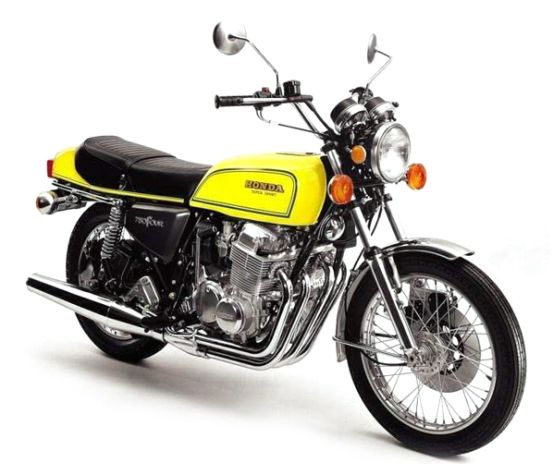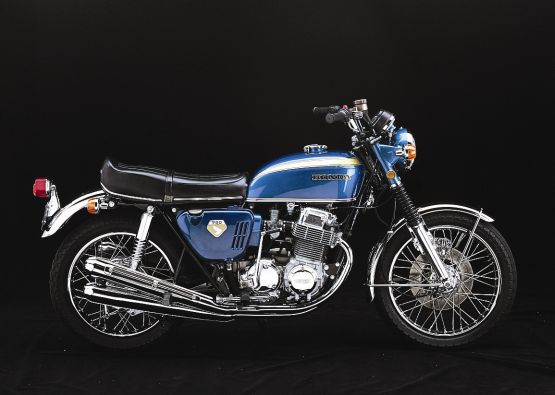During that whole time the engine had performed flawlessly, but the bike was beginning to look a bit dated. A new look was on the cards and the CB750K, as it was known, underwent a cosmetic makeover and became the CB750F. Contributing to the more streamlined look was the sleeker and less rounded petrol tank, and carrying the theme rearward was the fibreglass cowl extension to the rear seat. The four-into-four exhaust system gave way to a much lighter and more efficient system wherein the four individual pipes exited into a collector and finally ended in a large-diameter muffler, which, in addition to mellowing the exhaust note, was reputed to be theoretically superior to the earlier system. A rear disc brake in place of the initial drum completed the upgrades and the side panels proclaimed the new avatar as “Super Sport FOUR”.
Although it was wisely concluded that it should be left alone, the engine did get the benefit of a lighter crankshaft and flywheel along with slightly higher domed pistons, which raised the compression ratio to 9.2:1 from 9.0:1.
To complement these changes and in consideration of the 12 pound increase in overall weight, the overall gearing was lowered from the K series’ 4.99:1 to 5.43:1. The sum total was not just an appealing new-look motorcycle, but one that promised lively performance, darting around town or blasting down the highway. And the best part was that all that performance came with confidence-inspiring stopping power from the front and rear disc brake set-up. But any self-respecting motorcycle that calls itself Super Sport needs to do more than just go fast (in a straight line) and stop well. To fully justify its sporting stance it must, above all, be endowed with handling that combines agility and stability through the twisties, allowing the average rider to apply his skills satisfactorily to obtain the greatest pleasure from every ride, whether it is to the local grocery store or up a mountain road, trail-braking into corners and accelerating out of them, and the Honda CB750F would fulfil this role more than adequately.
But all this mechanical exuberance did not happen in one single go. Coming off the drawing board the “Super Sport” incorporated a few significant changes into the steering geometry. The steering angle had been steepened, which, in turn, shortened the trail. Theoretically, one would expect this to be in the interest of making the CB 750 quicker steering, but to curb any over-enthusiastic over-steer behaviour accompanied by a sacrifice in straight-line stability, the swing-arm was lengthened.
However, contrary to engineering assumptions and probably even computer predictions, the application of these changes did not produce the desired results; in fact, the initial prototype CB 750 Super Sport models that were tested by the American testers were termed “horrors”. Although the motorcycles were not wanting in performance from the engine/transmission POV and also the distinctive good looks, they could not deliver the most important aspect of a great motorcycle: an outstanding or even a confidence-inspiring riding experience.




Leave a Reply